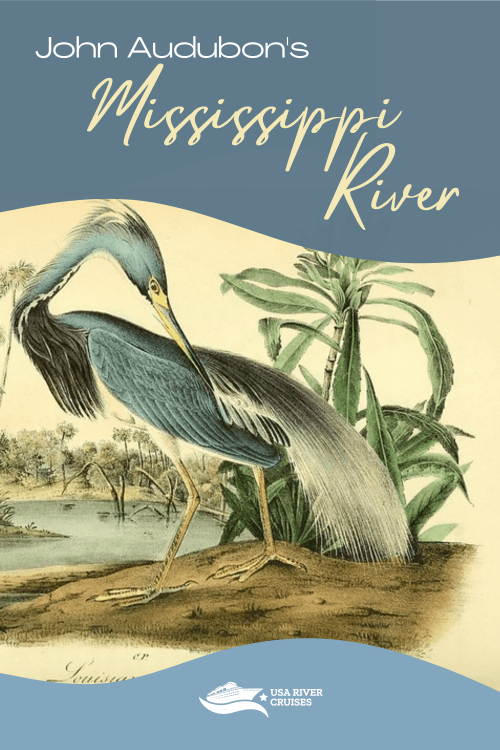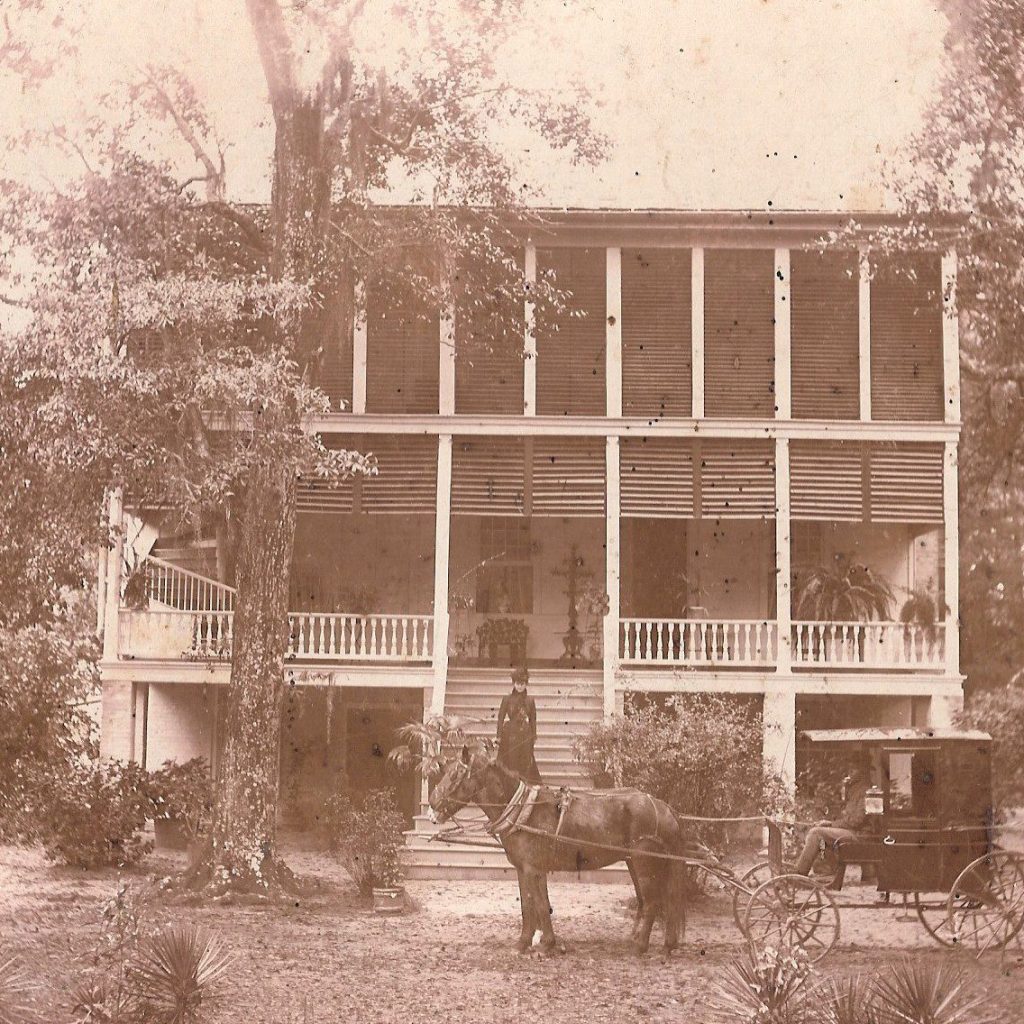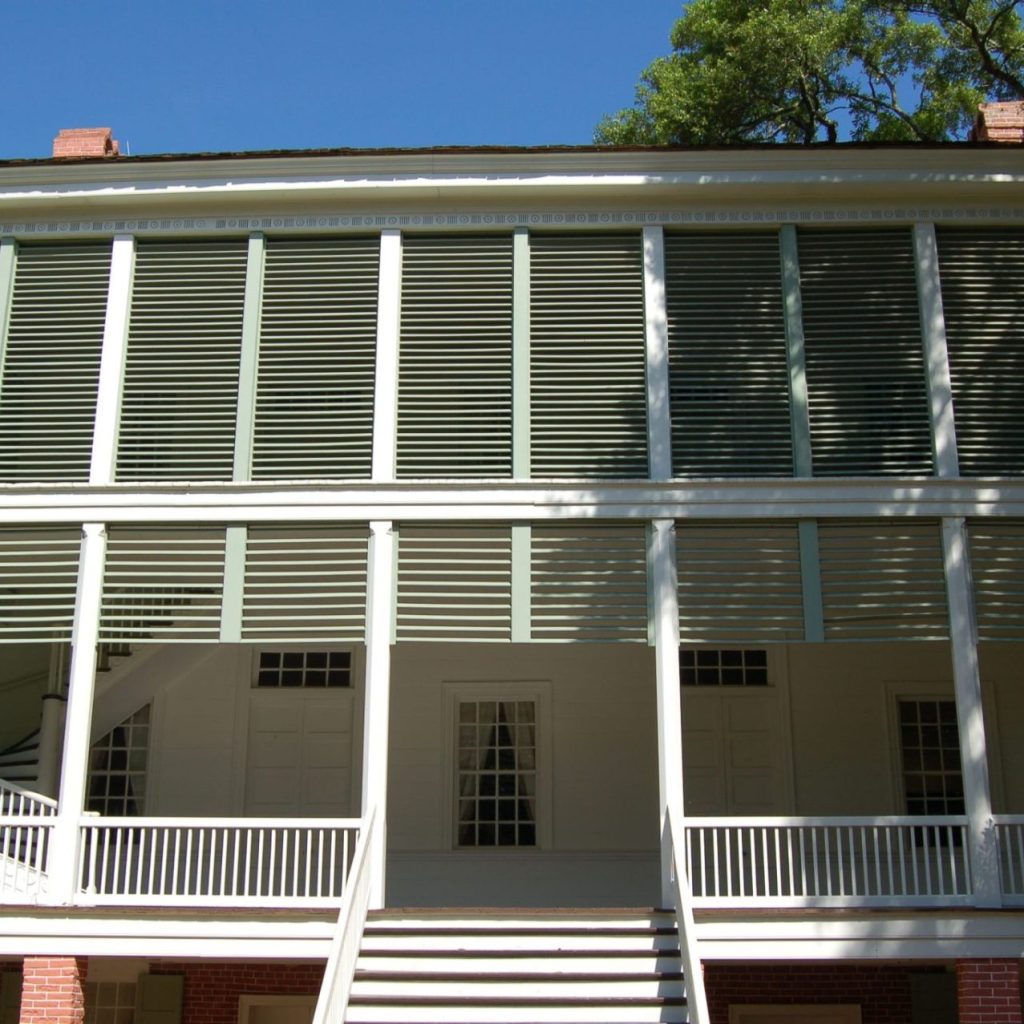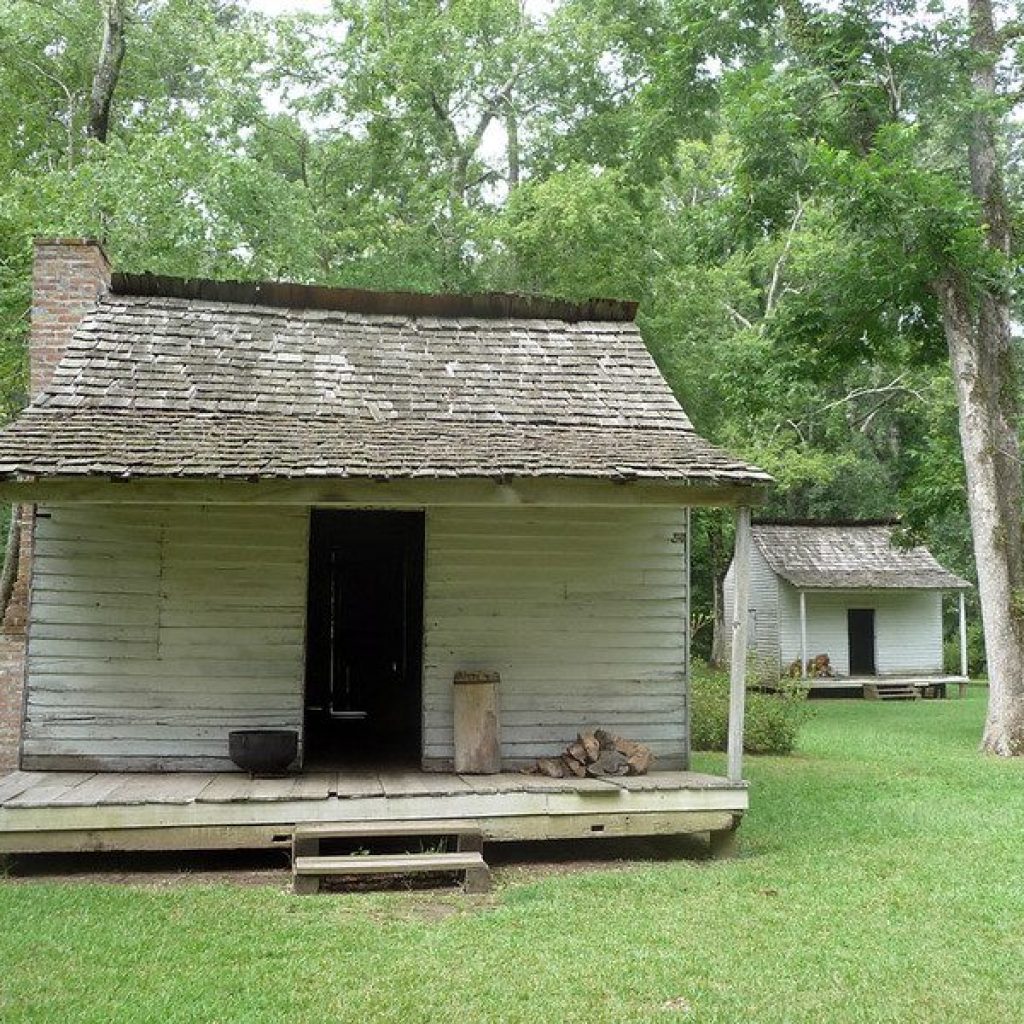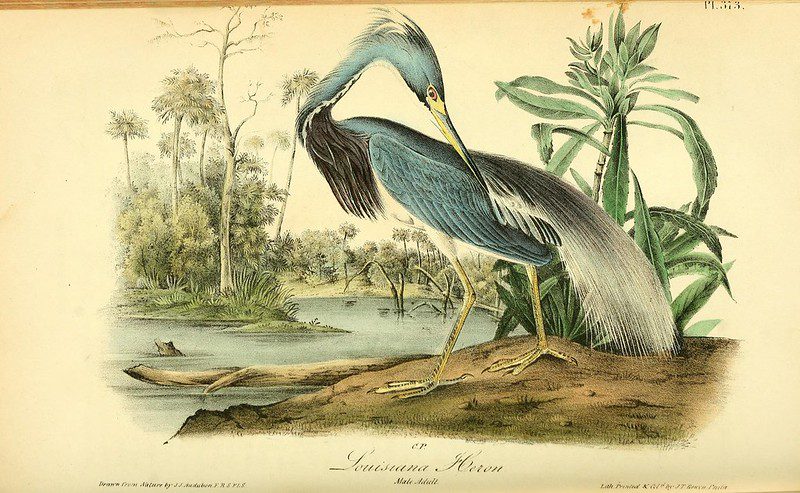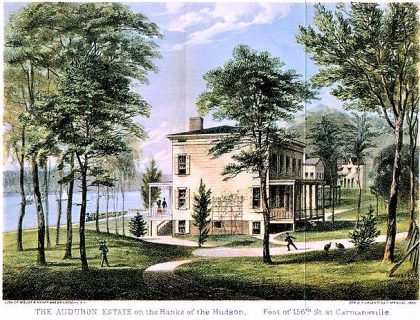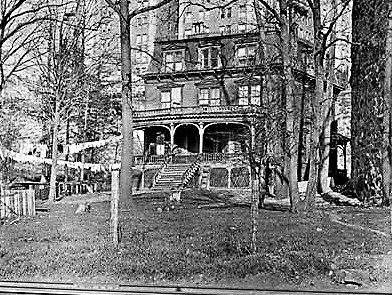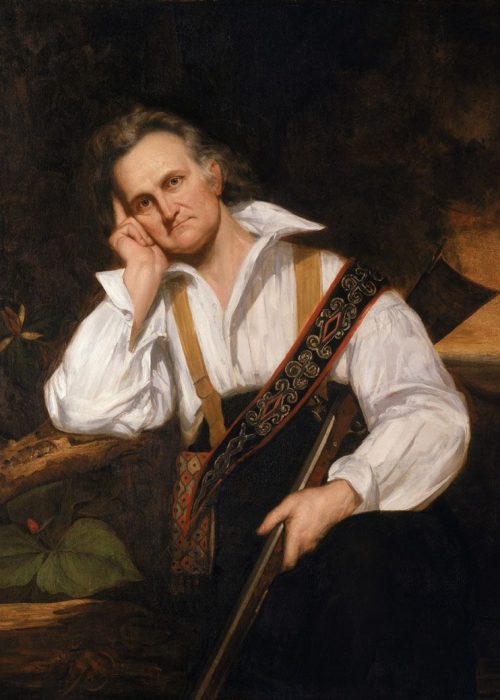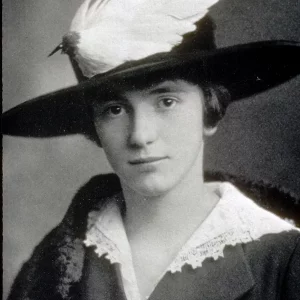
by Dawn Woolcott
The Oakley Plantation, St. Francisville, Louisiana
High on a bluff overlooking the Mississippi River, you’ll find an unusual plantation house that looks unlike others you may envision when “plantation house” comes to mind. This house was purpose-built to deal with the oppressive heat found in the summers along the Mississippi. Columns are hidden behind large slats that form a louvered wall of shade to help cool the porches and interior. The house was just 12 years old when the owner hired a middle-aged man working as an artist in New Orleans to come and stay and tutor his daughter on the finer techniques of drawing. The man had a reputation as a naturalist who painted amazing detailed illustrations of wildlife he saw as well as portraits. John James Audubon only stayed four months as a tutor, but managed to paint 32 illustrations while there.
“The rich magnolias covered with fragrant blossoms, the holly, the beech, the tall yellow poplar, the hilly ground and even the red clay, all excited my admiration. Such an entire change in the fall of nature in so short a time seems almost supernatural, and surrounded once more by numberless warblers and thrushes, I enjoyed the scene.”
– John James Audubon, upon his arrival at Oakley in 1821
John Audubon was a complex man of undeniable talent for art, but not one should idolize. He was a man of his times, and the times were unfortunate. He was born in Haiti, the illegitimate son of a plantation owner and one of his employees. Who exactly his mother was is still debated. She died soon after giving birth, and the baby was sent off to the father’s relatives in France, who adopted him as their own son. With the emergence of war in France, the young boy was sent off to their estate near Philadelphia to avoid being conscripted to join Napoleon’s army. The young man was supposed to run the farm there, but was unsuccessful and eventually lost the farm entirely. There, the he honed his artistic talents as a hobby. Although he tried several business ventures, they all failed. He was fairly successful though at one business venture that is hard for us to understand today. He bought and sold slaves for a profit. During his life as an artist, he is a contradiction as someone who sees the beauty in the variety of nature, and yet was not able to transfer that acknowledgement to human beings. The Oakley Plantation did not surprisingly have slaves, and you can visit the house and slave quarters that still sit on the property, and see the difference of the times between the haves and the have-nots..
Audubon was not particularly adept at earning money – few artists are – and he briefly was jailed while living in Henderson Kentucky for failure to pay debts. He found himself in Henderson after leaving Pennsylvania and heading west, painting birds along the way. He had been inspired by meeting and seeing the works of a famous illustrator, Alexander Wilson, and thought he would try painting full-time. Audubon’s technique involved shooting the birds, then pinning them into position on a specially crafted board before proceeding to paint them. His artwork was unique by depicting the birds in realistic positions with dramatically painted backgrounds, rather than a plain white scientific background. He lived and worked in what was then the frontier town of Henderson for about nine years before moving the family south towards New Orleans.
His home in New Orleans can be seen at 505 Dauphine Street, which is not far from the Hermann Grima House Museum or the Mardi Gras Museum in the French Quarter. It is a humble home and where he and his wife and children lived for about two years. After failing to raise enough interest in his paintings, in 1826 he decided to sail to England to get his paintings published. The large, life-sized illustration books were very successful and finally gained him the accolades he deserved.
With his success, In 1841 he was able to purchase a large rural estate on the Hudson River in New York. He lived there for the remainder of his life, only leaving to head west once again in 1843 to work on a new collection of illustrations on mammals. As his eyesight failed, he relied more and more on his assistant, until he finally died in 1851 following a stroke. He is buried in New York City’s Trinity Church Cemetery at 155th St. and Broadway in Uptown Manhattan. The beautiful home and estate he owned unfortunately had to be parceled off to raise money, eventually leaving the family. It was in threat of being torn town in the 1920s and while an effort was raised to save it, efforts failed and now if you visit the area once known as “Audubon Park” is gone, and only “Pigeon Park” remains, swallowed up by train tracks and apartment complexes.
While you cannot visit his home, you may see original works by Audubon at the Audubon Museum in Henderson, Kentucky, or at the Oakley Plantation, where 32 of his originals are displayed, all painted during his time there. At least two of his paintings hang in the White House. An original painting of the man himself hangs in the Museum of Science in Boston.
John Audubon’s realistic illustrations encouraged others to appreciate the beauty of wildlife without resorting to killing. Beautiful bird feathers were all the rage in women’s fashion in the 19th century, ornamenting hats from coast to coast. This fashion trend was killing millions of birds per year and inspired a group of women in Boston to form the first Audubon society in 1896. The society of bird lovers has grown world-wide to help protect birds and waterfowl ever since. You can find your local chapter here. Audubon may have influenced more than he knew, As a young naturalist, Theodore Roosevelt was trained by one of Audubon’s taxidermists. Roosevelt studied Audubon’s paintings and writings, which may have influenced his conservation efforts and his work to preserve vast wilderness areas for all to enjoy.
Learn more about birding in Louisiana or in Kentucky, or discover more about opportunities to cruise the Mississippi or Ohio River to see native birds or to visit the Audubon Museum in Henderson, his home in New Orleans, or the Oakley Plantation in St. Francisville.
Travel the Mississippi River yourself and see what birds you can see!
Lower Mississippi River Cruise-American Serenade
New Orleans to Memphis
- 8 Nights
- November 12, 2024,February 21, 2025,February 28, 2025--
17 more dates available. - From $5,545
- American Serenade
Viking-America’s Great River
St Paul to New Orleans
- 14 Nights
- July 5, 2025,September 6, 2025,October 11, 2025
- From $12,999
- Viking Mississippi
Save this story to Pinterest
